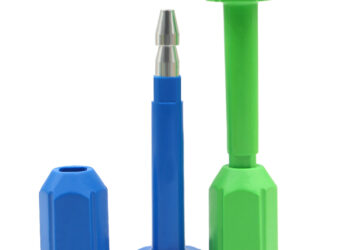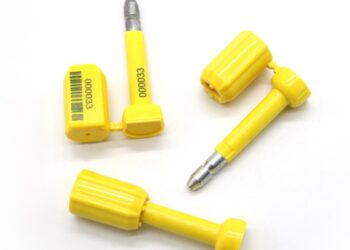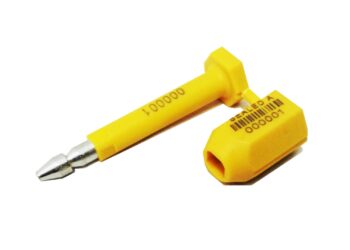Choosing ISO 17712 compliant seals for rail transport involves several critical considerations to ensure the security, integrity, and regulatory compliance of cargo. These seals are designed to prevent unauthorized access to containers and railcars during transit, safeguarding goods from theft, tampering, and contamination. Here are the key factors to take into account when selecting ISO 17712 compliant seals for rail transport:
1. Security Level and Risk Assessment:
Begin by assessing the level of security required for your cargo. Evaluate the potential risks, including theft, tampering, and unauthorized access. Different seal types offer varying levels of security, from indicative seals that provide a basic visual deterrent to high-security seals equipped with advanced tamper-evident features. Choose a seal that aligns with your cargo’s value and vulnerability.
2. ISO 17712 Compliance:
Ensure that the seals you choose are compliant with the ISO 17712 standard. This standard defines the requirements for mechanical seals used on freight containers, including their design, construction, and testing procedures. ISO 17712 compliant seals are categorized into three security levels: “H” (high security), “S” (security), and “I” (indicative). Select a seal category based on the level of protection needed for your cargo.
3. Tamper-Evident Features:
Look for seals with robust tamper-evident mechanisms that clearly indicate any attempt at unauthorized access. These features might include sequential numbering, barcode or QR code technology, and unique markings that are difficult to replicate. Tamper-evident seals help detect tampering quickly, enhancing cargo security and traceability.
4. Strength and Durability:
Consider the seal’s strength and durability, especially when it comes to rail transport. Railcars can experience significant vibrations, impacts, and environmental conditions that might affect the seal’s integrity. Choose seals made from durable materials, such as high-strength metals or heavy-duty plastics, to withstand these challenges.
5. Compatibility with Railcar Design:
Railcars come in various designs and configurations. Ensure that the chosen seals are compatible with the railcar’s locking mechanisms and securing points. Seals should fit snugly and securely, preventing any gaps that could be exploited by potential intruders.
6. Ease of Application:
Efficient application of seals is crucial to maintaining the security of cargo without causing unnecessary delays in transit. Opt for seals that are easy to apply, especially in settings where multiple seals need to be attached quickly.
7. Regulatory Compliance:
Rail transport is subject to various regulations and security standards. Verify that the chosen seals meet the requirements set by relevant authorities, ensuring smooth transit and preventing potential legal issues.
8. Record-Keeping and Traceability:
Consider seals that provide a clear record-keeping mechanism, such as unique serial numbers or barcodes. This enables efficient tracking and tracing of shipments, helping to locate and identify cargo in case of any incidents.
9. Supplier Reputation and Support:
Select a reputable supplier with a history of providing high-quality seals for rail transport. A reliable supplier can offer guidance on the most suitable seal type for your specific needs and provide support in case of any issues during transit.
10. Cost-Effectiveness:
While security is paramount, it’s also important to consider the cost implications of the chosen seals. Balance the level of security needed with the budget available, ensuring that the selected seals provide an appropriate cost-effective solution.
Conclusion,
choosing ISO 17712 compliant seals for rail transport involves a comprehensive evaluation of security requirements, regulatory compliance, tamper-evident features, durability, and application ease. By carefully considering these factors, you can make an informed decision that enhances the security and safety of your cargo during rail transportation.











